Aeropoxy 1/72 Soko J22 - Orao
During 1970, the neighbouring nations of Romania and Yugoslavia began discussions on the subject of jointly developing a new ground-attack orientated fighter aircraft. On 20 May 1971, the Romanian and Yugoslavian governments signed an agreement for the formation of YuRom, a joint research and development venture between the two nations.
The research programme was headed by Dipl. Dr. Engineer Teodor Zanfirescu of Romania and Colonel Vidoje Knezević of Yugoslavia. The aircraft was intended to be a replacement for both the lightly armed Soko J-21 Jastreb and the Republic F-84 Thunderjet that were then in the Yugoslav People's Army's (JNA) arsenal. The requirements called for a lightweight aircraft that featured a relatively simple and rugged structure, that would use locally produced equipment and avionics, capable of operating from austere airstrips (including the ability to operate either from grass or damaged runways), as well as being reliable and easy to maintain.
The resulting design was of a conventional twin-engine monoplane, featuring a high-mounted wing complete with all-swept flight surfaces. According to Fredriksen, the design emphasised simplicity as well as modernity. Due to political sensitivities and a strong desire to avoid one nation upstaging the other, the aircraft featured two separate names; in Romania, it was known as the IAR-93 Vultur while in Yugoslavia it was referred to as the J-22 Orao.
During 31 October 1974, the Yugoslav prototype 25002 conducted its first flight from Batajnica Air Base near Belgrade, with Major Vladislav Slavujević at the controls. For political reasons, this flight was timed to deliberately coincide with the first flight of the IAR-93 Vultur prototype. The third aircraft, numbered 25003, which was a pre-production two-seater version, performed its first flight on 4 July 1977.
Construction of further pre-production aircraft was unimpacted by the loss; during 1978, the first batches of pre-production machines were delivered to the Air Force Aircraft Testing Facility in Belgrade. Subsequent serial production was established at a facility outside Mostar, (now in Bosnia and Herzegovina); this facility would be abandoned in 1992 and heavily damaged during the Yugoslav Wars. Production would never be resumed either in Yugoslavia or in its successor states.
During October 1983, the first afterburner-equipped J-22 Orao was flown in Yugoslavia. On 22 November 1984, an Orao broke the sound barrier while in a shallow dive; this instance made the J-22 the first Yugoslav-designed aircraft to exceed Mach 1. The aircraft is incapable of breaking the sound barrier in level flight, so it is classified as being a subsonic aircraft.
Today, Serbian Air Force still uses Orao as a fighter plane, it can be seen flying over Serbia and on the air shows.
Well, this is my very first attempt in model which is completely made of resin. I decided to do Ex Yugoslav plane Soko J22 Orao. I generally hate resin, but I wanted to have this model. This is 1/72 scale model made by Aeropoxy from Serbia, decals are also Serbian brand LiftHere. I had get resin because there is little hope to find some old plastic kits of Orao.
I knew that resin requires many CA glue, putty in enormous quantities, vacuform canopies which demands patience… I spend much of the time sanding, rescribing, puttying… I know that there are many fellow modellers who are in love with resin models, but in future I will stay with resin just as add ons on models. I had many holes, lost rivets and panels… I had to completely sand the model and rescribe it from the scratch. Also, I was doing vacuform canopy for almost whole day, then You have to attach the armor as a glue on poieces on canopy… Many hours spent on this tiny model. Cockpit is very basic, parts are very fragile and prone to break. All in all, I will not recommend this kit to beginners, just to very expirienced modellers with great patience and love towards sanding, rescribbing… Instructions are very typical for resin models – terrible! But, You get many masking numbers, cd rom with plenty pdf books… Generally, I will never, ever do resin again…
I made shapes with masking tapes and airbrush, decals from LiftHere were absolutely fantastic!
This is the plane which can be seen on air shows, it was flown by famous major Miodrag Ristic. It is stationed in Ladjevci today and it is flown by commanding officer of the unit tigers.


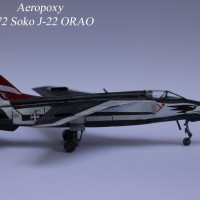
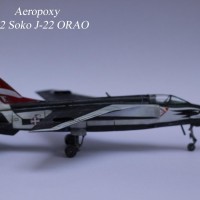
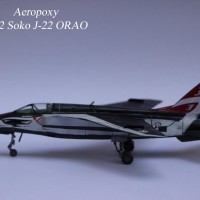
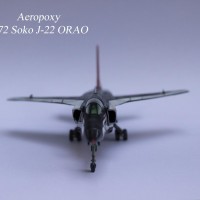
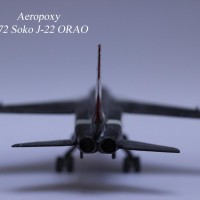
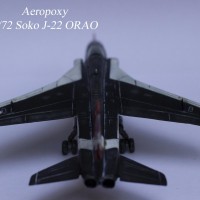

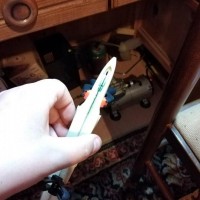
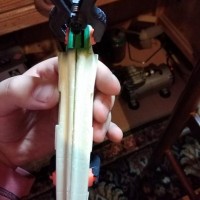

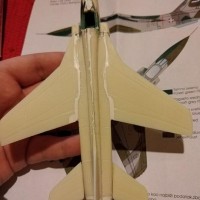
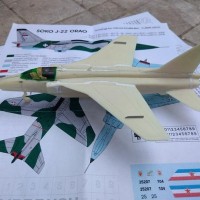
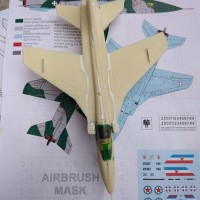

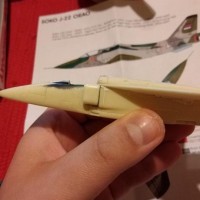
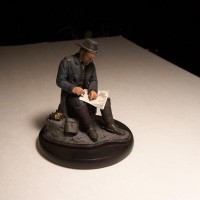
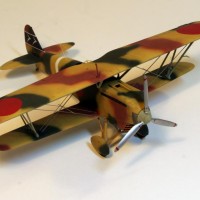

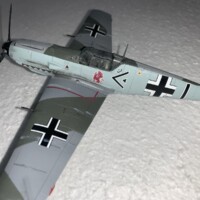
Wow! You’re hard work paid off with a great rendition of an unusual plane.
Thank You John!
Orao is beautiful live
Very beautiful color scheme!
Thank You, this is commanding plane of the air unit
Nicely done!
Thank You
That is a fantastic effort resulting to a beautiful model, Djodje! Very rarely seen, catches the eye instantly.
Congratulations!
Dear Spiros, You are much more into planes then me, as a professional pilot, modeller... Your compliment is much appricieted!
I decided to do this model because I had many opportunities to see this exact plane on air shows. It is beautiful to see it in vivo. Whole Orao unit is some 10 kilometers from my home, I have opportunity to see them very often, they are currently being upgraded to do more missions during night, modernizing radars, weaponry... It would be more comfortable to do this model in plastic, therefore I will stay away from resin and vacuform in future
Nice work - ended up looking great! Yeah - I think I'm with you - as much as I crave adding some of these little-known subjects to my collection, I just don't want to tackle resin.
I must agree with You, I hate resin because of many reasons, terrible fit, lpt of work is required, health is gravely on test because of resin dust... So, plastic is plastic